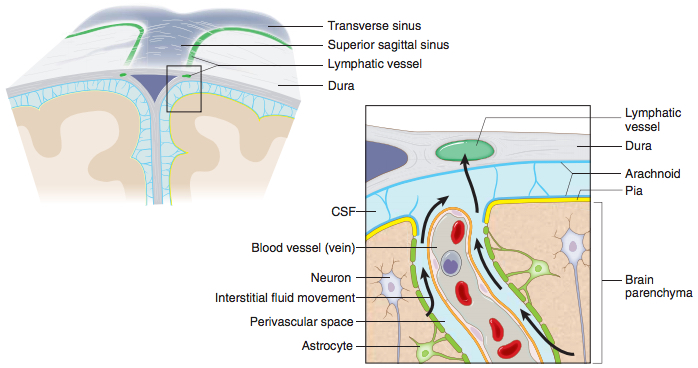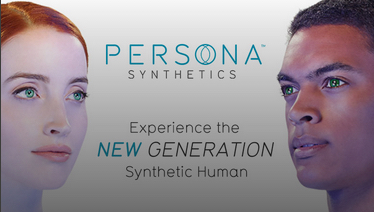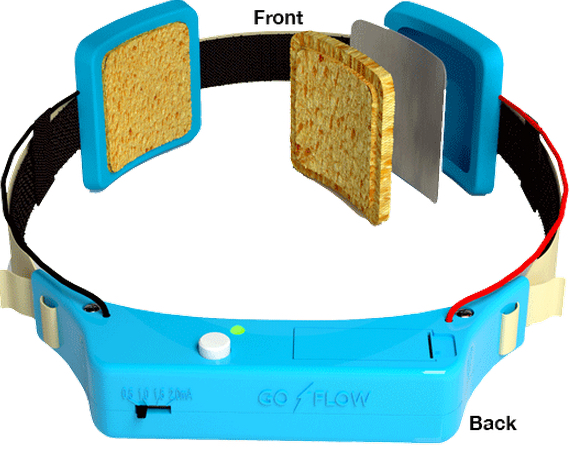
Part of the calming “Squeeze Machine” designed by Temple Grandin (credit: Therafin Corp.)
A new open-access study shows that social and sensory overstimulation drives autistic behaviors and supports the unconventional view that the autistic brain is actually hyper-functional. The research offers new hope, with therapeutic emphasis on paced and non-surprising environments tailored to the individual’s sensitivity.
For decades, autism has been viewed as a form of mental retardation, a brain disease that destroys children’s ability to learn, feel and empathize, thus leaving them disconnected from our complex and ever-changing social and sensory surroundings. From this perspective, the main kind of therapeutic intervention in autism to date aims at strongly engaging the child to revive brain functions believed dormant.
Predictability is key
Now researchers at the Swiss Federal Institute of Technology in Lausanne (EPFL) have completed a study that turns this traditional view of autism completely around. The study, conducted on rats exposed to a known risk factor in humans, demonstrates that unpredictable environmental stimulation drives autistic symptoms at least as much as an impoverished environment does.
It also shows that predictable stimulation can prevent these symptoms.
The study is also evidence for a drastic shift in the clinical approach to autism, away from the idea of a damaged brain that demands extensive stimulation. Instead, autistic brains may be hyper-functional and thus require enriched environments that are non-surprising, structured, safe, and tailored to a particular individual’s sensitivity.
“The valproate rat model used is highly relevant for understanding autism, because children exposed to valproate in the womb have an increased chance of presenting autism after birth,” says Prof. Henry Markram, co-author of the study and father of a child with autism. He notes that the rats exposed to valproate in early embryonic development demonstrate behavioral, anatomical and neurochemical abnormalities that are comparable to characteristics of human autism.
The scientists here show that if these rats are reared in a home environment that is calm, safe, and highly predictable with little surprise — while still rich in sensory and social engagement — they do not develop symptoms of emotional over-reactivity such as fear and anxiety, nor social withdrawal or sensory abnormalities.
“We were amazed to see that environments lacking predictability, even if enriched, favored the development of hyper-emotionality in rats exposed to the prenatal autism risk factor,” says Markram.
The study critically shows that in certain individuals, non-predictable environments lead to the development of a wider range of negative symptoms, including social withdrawal and sensory abnormalities. Such symptoms normally prevent individuals from fully benefiting from and contributing to their surroundings, and are thus the targets of therapeutic success.
The study identifies drastically opposite behavioral outcomes depending on levels of predictability in the enriched environment, and suggests that the autistic brain is unusually sensitive to predictability in rearing environment, but to different extent in different individuals.
Hyper-functional brain microcircuits
The study is strong evidence for the Intense World Theory of Autism, proposed in 2007 by neuroscientists Kamila Markram and Henry Markram, both co-authors on the present study. This theory is based on recent research suggesting that the autistic brain, in both humans and animal models, reacts differently to stimuli.
It proposes that an interaction — between an individual’s genetic background with biologically toxic events early in embryonic development — triggers a cascade of abnormalities that create hyper-functional brain microcircuits, the functional units of the brain.
Once activated, these hyper-functional circuits could become autonomous and affect further brain functional connectivity and development. These would lead to an experience of the world as intense, fragmented, and overwhelming; while differences in severity between persons with autism would stem from the system affected and the timing of the effect.
Stable, structured environment
Instead, a stable, structured environment rich in stimuli could help children with autism, by providing a safe haven from an overload of sensory and emotional stimuli, the authors suggest.
This study has immediate implications for clinical and research settings. It suggests that if brain hyper-function can be diagnosed soon after birth, at least some of the debilitating effects of a supercharged brain can be prevented by highly specialized environmental stimulation that is safe, consistent, controlled, announced and only changed very gradually at the pace determined by each child.
The research supports the work of Temple Grandin, PhD, an author and professor of animal science at Colorado State University. One of the therapeutic methods she developed (and used herself) was the “hug machine” (AKA “squeeze machine”), a deep-pressure device designed to calm hypersensitive persons. The device is featured in an award-winning biographical film, Temple Grandin.
Abstract of Predictable enriched environment prevents development of hyper-emotionality in the VPA rat model of autism
Understanding the effects of environmental stimulation in autism can improve therapeutic interventions against debilitating sensory overload, social withdrawal, fear and anxiety. Here, we evaluate the role of environmental predictability on behavior and protein expression, and inter-individual differences, in the valproic acid (VPA) model of autism. Male rats embryonically exposed (E11.5) either to VPA, a known autism risk factor in humans, or to saline, were housed from weaning into adulthood in a standard laboratory environment, an unpredictably enriched environment, or a predictably enriched environment. Animals were tested for sociability, nociception, stereotypy, fear conditioning and anxiety, and for tissue content of glutamate signaling proteins in the primary somatosensory cortex, hippocampus and amygdala, and of corticosterone in plasma, amygdala and hippocampus. Standard group analyses on separate measures were complemented with a composite emotionality score, using Cronbach’s Alpha analysis, and with multivariate profiling of individual animals, using Hierarchical Cluster Analysis. We found that predictable environmental enrichment prevented the development of hyper-emotionality in the VPA-exposed group, while unpredictable enrichment did not. Individual variation in the severity of the autistic-like symptoms (fear, anxiety, social withdrawal and sensory abnormalities) correlated with neurochemical profiles, and predicted their responsiveness to predictability in the environment. In controls, the association between socio-affective behaviors, neurochemical profiles and environmental predictability was negligible. This study suggests that rearing in a predictable environment prevents the development of hyper-emotional features in animals exposed to an autism risk factor, and demonstrates that unpredictable environments can lead to negative outcomes, even in the presence of environmental enrichment.









